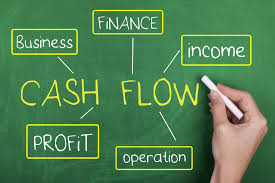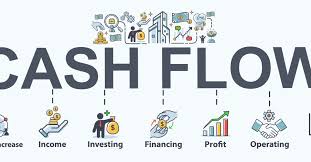Analyzing farm records might sound a bit dry, but trust me, it’s like looking into the heart of your farm. Every bit of data you jot down from the number of eggs collected to how much feed was used tells a story.
And guess what? These stories help you make smart, informed decisions that steer your farm towards success. Think of it as the GPS for your farm’s future, guiding you towards more productivity and profits.
Now, I know it’s easy to get lost in the numbers, but don’t worry, I’m here to help! When you start tracking everything, from livestock performance to crop yields, you’re laying the groundwork for smarter farming.
Just like a chef needs the right ingredients for a perfect dish, you need accurate records to fine-tune your farm’s operations. With this info, you can spot trends, make adjustments, and even prepare for the long haul.
So, what does this all mean for you? Well, understanding the importance of good record-keeping can be a game-changer. This is the foundation of your farm’s growth, sustainability, and profit.
It’s not just about making things run smoothly today, but ensuring that your farm will thrive tomorrow.
Let’s break it down. When your records are accurate and complete (and yes, we’re aiming for that), you can whip out some nifty financial tools to analyze your farm.
Think of these as your secret weapons: the balance sheet, income statement, and projected monthly cash flow statement. Trust me, they may sound intimidating, but they’re your best friends when it comes to making both short and long-term decisions for your farm and yes, that includes planning for those family expenses too.
The balance sheet is like taking a selfie of your farm’s finances on a specific day. It captures everything of what you own (assets) and what you owe (liabilities).
Whether it’s that tractor you bought last year or the loan you’re still paying off, it’s all there, neatly laid out. And no, you don’t need to worry about income and expenses here. This is just about where things stand right now.
To make it even clearer, the balance sheet separates your assets into categories based on how long they’ll last: less than a year, 1-7 years, or longer (like land and buildings).
This helps you see both the original cost and what it’s worth today if you were to sell it. So, while it might seem like a lot of numbers, it’s really just showing you a snapshot of your farm’s overall health like checking your bank balance after payday.
By the end of it, you’ll know the net worth of your farm which is the value of everything you own minus what you owe.
It’s like getting a peek into your farm’s financial heart. And once you’ve got that? You’re in control, ready to make the best decisions for your farm’s future.
Types of Networth Ratio in Farming Business
Some of the ratios and relationships on a typical net worth statement are examined below;
1. Current Ratio (Liquidity): it is a measure of a business’ ability to meet current debt obligations as they come due without disrupting normal operations. The ratio is calculated by dividing the current assets by the current liabilities.
As a general rule, two naira of current assets to one naira of current liabilities represents a strong ratio. A current ratio of 1.5:1 is good. 1 to 1 is weak and <1 to 1 often results in cash flow problems.
2. Working ratio: This measures a company’s ability to recover operating costs from annual revenue. It is calculated by taking total annual expenses, excluding depreciation and debt-related expenses, and dividing it by the annual gross income.
Working capital ratio is calculated simply by dividing total current assets by total current liabilities. For that reason, it can also be called the current ratio.
It is a measure of liquidity, meaning the business’s ability to meet its payment obligations as they fall due. Most analysts consider the ideal working capital ratio to be between 1.5 and 2.
As with other performance metrics, it is important to compare a company’s ratio to those of similar companies within its industry
3. Net working capital ratio: is the net amount of all elements of working capital. It is intended to reveal whether a business has a sufficient amount of net funds available in the short term to stay in operation.
Generally, a working capital ratio of less than one is taken as indicative of potential future liquidity problems, while a ratio of 1.5 to two is interpreted as indicating a company on solid financial ground in terms of liquidity. An increasingly higher ratio above two is not necessarily considered to be better.
4. Debt to Asset Ratio (Solvency): It is a measure of the business’ ability to meet its total debt obligations, if all the assets were to be sold.
It provides an indication of the business ability to continue in the event of severe financial adversity caused by perils such as drought, excess moisture or a decline in commodity prices.
It also shows the percentage of the assets that are financed by outside creditors. The ratio is calculated by dividing the total liabilities by the total assets and is expressed as a percentage.
Debt to Asset ratio = Total liabilities x 100
As a general rule, a farm business having under 25% of its assets financed is in a fairly strong position while between 25% to 40% is moderate, and between 40% and 60% is in an increasingly weaker position.
The higher the debt ratio, expressed as a percentage the greater the financial risk as a result of the higher borrowing costs.
3. Earned financial progress (profitability): Earned financial progress refers to the increase in the farm business net worth from the beginning of the period to the end of the period as a result of the income earned by the business.
It is important to track the increases to networth that relate directly to income earned by the business as opposed to other adjustments or transactions.
Read Also: Introduction to Fish Nutrition
How to Prepare a Basic Balance Sheet for Farm Records

Here are the steps you can follow to create a basic balance sheet for your organization;
1. Determine the Reporting Date and Period:A balance sheet is meant to depict the total assets, liabilities, and shareholders’ equity of a company on a specific date, typically referred to as the reporting date. Often, the reporting date will be the final day of the reporting period.
Most companies/farms, especially publicly traded ones, will report on a quarterly basis. When this is the case, the reporting date will most usually fall on the final day of the quarter:
i. Q1: March 31
ii. Q2: June 30
iii. Q3: September 30
iv. Q4: December 31
Companies that report on an annual basis will often use December 31st as their reporting date, though they can choose any date. It’s not uncommon for a balance sheet to take a few weeks to prepare after the reporting period has ended.
2. Identify Your Assets: After you’ve identified your reporting date and period, you’ll need to tally your assets as of that date. Typically, a balance sheet will list assets in two ways: As individual line items and then as total assets.
Splitting assets into different line items will make it easier for analysts to understand exactly what your assets are and where they came from; tallying them together will be required for final analysis. Assets will often be split into the following line items:
i. Current Assets.
ii. Cash and cash equivalents.
iii. Short-term marketable securities.
iv. Accounts receivable.
v. Inventory.
vi. Other current assets.
vii. Non-current Assets.
viii. Long-term marketable securities.
xi. Property.
x. Goodwill.
xi. Intangible assets.
xii. Other non-current assets.
Current and non-current assets should both be subtotaled, and then totaled together.
3. Identify Your Liabilities: Similarly, you will need to identify your liabilities. Again, these should be organized into both line items and totals, as below:
i. Current Liabilities.
ii. Accounts payable.
iii. Accrued expenses.
iv. Deferred revenue.
v. Current portion of long-term debt.
vi. Other current liabilities.
vii. Non-Current Liabilities.
viii. Deferred revenue (non-current).
ix. Long-term lease obligations.
x. Long-term debt.
xi Other non-current liabilities.
As with assets, these should be both subtotaled and then totaled together.
4. Calculate Shareholders’ Equity: If a company or organization is privately held by a single owner, then shareholders’ equity will generally be pretty straightforward.
If it’s publicly held, this calculation may become more complicated depending on the various types of stock issued. Common line items found in this section of the balance sheet include:
i. Common stock
ii. Preferred stock
iii. Treasury stock
iv. Retained earnings
5. Add Total Liabilities to Total Shareholders’ Equity and Compare to Assets: To ensure the balance sheet is balanced, it will be necessary to compare total assets against total liabilities plus equity. To do this, you’ll need to add liabilities and shareholders’ equity together.
Farm Income Statement Analysis: Net Income = Revenue − Expenses
Other names used for this important accounting statement include: a profit and loss statement, an operating statement and an income and expense statement. The income statement lists the income and expenses of a business over a period of time called the accounting period.
Year to year profits are calculated on the income statement also known as the profit/loss statement. The income statement is used to calculate net cash income, adjusted by changes in inventories and capital items.
The net farm income refers to the ‘bottom line’ profit that is earned (or projected to earn) by the business during the accounting period. The Net Farm Income provides the answer to the question of how much profit the farm has made or is projected to make, in the business plan.
Analyzing the net farm Income as a return on the farm assets and equity (networth) can also be informative. Since the Net Farm Income represents the return the farm earns on investment.
How to Write your Farm Income Statement
The best way to ascertain how much revenue your business has generated, you’ll need to create a performance statement alongside other financial statements.
To write an income statement and report the profits your small business is generating, follow these accounting steps:
1. Pick a Reporting Period: The first step in preparing an income statement is to choose the reporting period your report will cover. Businesses typically choose to report their income statement on an annual, quarterly or monthly basis.
Publicly traded companies are required to prepare financial statements on a quarterly and annual basis, but small businesses aren’t as heavily regulated in their reporting.
Creating monthly income statements can help you identify trends in your profits and expenditures over time. That information can help you make business decisions to make your company more efficient and profitable.
2. Generate a Trial Balance Report: To create an income statement for your business, you’ll need to print out a standard trial balance report.
You can easily generate the trial balance through your cloud-based accounting software. Trial balance reports are internal documents that list the end balance of each account in the general ledger for a specific reporting period.
Creating balance sheets is a crucial part of creating an income statement, as its how a company gathers data for their account balances. It will give you all the end balance figures you need to create an income statement.
3. Calculate Your Revenue: Next, you’ll need to calculate your business’s total sales revenue for the reporting period. Your revenue includes all the money earned for your services during the reporting period, even if you haven’t yet received all the payments.
Add up all the revenue line items from your trial balance report and enter the total amount in the revenue line item of your income statement.
FreshBooks provides an easy-to-follow accounting formula to make sure that you’re calculating the right amounts and creating an accurate income statement.
4. Determine Cost of Goods Sold: Your cost of goods sold includes the direct labor, materials and overhead expenses you’ve incurred to provide your goods or services.
Add up all the cost of goods sold line items on your trial balance report and list the total cost of goods sold on the income statement, directly below the revenue line item.
5. Calculate the Gross Margin: Subtract the cost of goods sold total from the revenue total on your income statement. This calculation will give you the gross margin, or the gross amount earned from the sale of your goods and services.
6. Include Operating Expenses: Add up all the operating expenses listed on your trial balance report. Each expense line should be double-checked to make sure you have the correct figures.
Enter the total amount into the income statement as the selling and administrative expenses line item. It’s located directly below the gross margin line.
7. Calculate Your Income: Subtract the selling and administrative expenses total from the gross margin. This will give you the amount of pre-tax income. Enter the amount at the bottom of the income statement.
8. Include Income Taxes: To calculate income tax, multiply your applicable state tax rate by your pre-tax income figure. Add this to the income statement, below the pre- tax income figure.
9. Calculate Net Income: To determine your business’s net income, subtract the income tax from the pre-tax income figure. Enter the figure into the final line item of your income statement.
This will give you a general understanding of your business performance, letting you see how profitable you have been.
10. Finalize the Income Statement: To finalize your income statement, add a header to the report identifying it as an income statement. Add your business details and the reporting period covered by the income statement.
With all of the data you’ve compiled, you’ve now created an accurate income statement. This will give you a future understanding of income statement definition that will be of great benefit to you and your business practice.
Cash Flows in Farming Business

The cashflow projection stimulated the anticipated financial activity that will flow through the farm bank account during the accounting period.
The projected monthly cashflow statement is used to look ahead to the next year of operations. By projecting a cashflow for the next year, potential cash shortfalls can be noted and appropriate changes in the farm operation can be analyzed.
When it comes to what goes in a cash flow statement, there are three types of cash flows you will want to break out in order to gain the most value and insight from your cash flow statement:
1. Operating activities cash flow: This is the money your business generates and spends on typical, day-to-day operating activities, such as selling products and services or paying rent and employees. Cash flows from operations are integral to your cash flow statement.
2. Investing activities cash flow: This is the money spent on and generated from market securities, long term assets, and other financial instruments over the reporting period. It could be from buying or selling major equipment or property, or other related purchases or sales, for example.
3. Financing activities cash flow: Financing activities include the money that moves between a company and its owners, investors, and creditors, such as by issuing equity or debt.
How to Prepare a Farm Cash Flow Statement Step by Step
Before you start working on your statement, determine whether the indirect method or the direct method to prepare a cash flow statement makes the most sense, given your needs.
Keep in mind that the method you select will only affect the operating activities section of your statement as the investing and financing activities sections will look the same regardless of the method used.
Each method has its advantages and disadvantages. The indirect method is more common, for example, because it’s generally simpler and less time-consuming to perform.
But the direct method provides greater detail about your company’s cash situation and, in turn, more potentially valuable insights.
1. Indirect Methods to Prepare a Cash Flow Statement
The indirect method is based on accrual basis accounting which means revenues and expenses are counted when they are incurred, not when money actually changes hands. Most companies use the accrual basis of accounting method, which is partly why this method is so popular.
For the operating activities section of the cash flow statement, the indirect method involves first showing the company’s net income (which should be found easily on your company income statement).
You then show any noncash inflow or outflow adjustments that need to be made in order to calculate the total operating activities cash flow. Common adjustments, for example, include:
i. Depreciation (which must be added back to the net income because it does not count as cash flow)
ii. Accounts payable
iii. Accounts receivable
iv. Inventory expenses (which must be subtracted from the net income because they are considered a cash outflow)
v. Working capital changes
Read Also: Factors to Consider Before Starting a Fish Farming Business
2. Direct Methods to Prepare a Cash Flow Statement

The direct method relies on cash basis accounting meaning revenues and expenses are counted when actual cash receipts and payments are made during the reporting period.
The direct method generally takes more time and number-crunching because you are subtracting actual cash outflows from inflows rather than simply adjusting the net income. Common line items using the direct method include:
i. Customer receipts
ii. Payments to suppliers
iii. Payments to employees
iv. Interest and dividends received
v. Income tax payments
While breaking out each type of cash receipt or payment takes time, this method offers more detail and visibility into your company’s finances.
For example, it can show how much cash was spent during the reporting period on employee payroll or merchandise or the exact dollar value of customer sales rather than having those individual cash flow sources grouped together in “net income.”
That said, there are additional potential complexities to choosing the direct method to prepare cash flow statements. For one, since most companies use accrual basis accounting, the indirect method more naturally fits with their current accounting practices.
Moreover, the Financial Accounting Standards Board (FASB) requires companies using the direct method to also provide a “reconciliation” that shows how their net income would be adjusted to net cash (essentially using the indirect method) on a separate schedule.
Most accounting standard-setting entities (including FASB) prefer the direct method, though, because of the higher level of insight it provides.
If you choose to go the direct method route, you’ll want to start regularly tracking your cash inflows and outflows in the way you’ll be reporting it so that putting together the cash flow statement won’t be too much of a burden.
You can use accounting software such as Intuit QuickBooks, Zoho, or FreshBooks to keep tabs on your cash flow and more easily assemble the cash flow statement.
Do you have any questions, suggestions, or contributions? If so, please feel free to use the comment box below to share your thoughts. We also encourage you to kindly share this information with others who might benefit from it. Since we can’t reach everyone at once, we truly appreciate your help in spreading the word. Thank you so much for your support and for sharing!
Read Also: Feed and Nutrition Management for Cattle
Frequently Asked Questions
We will update this section soon.

